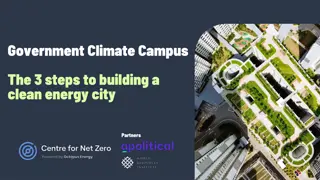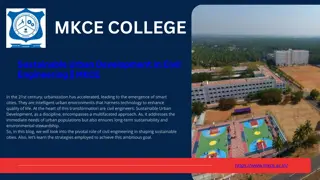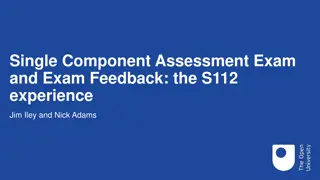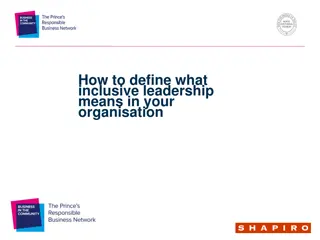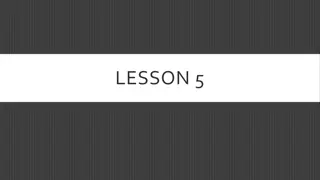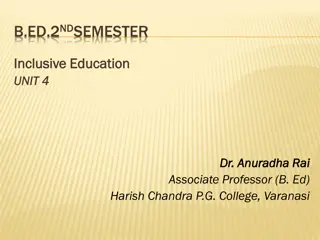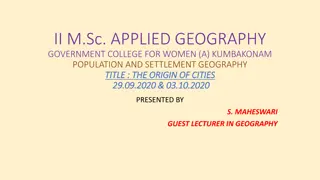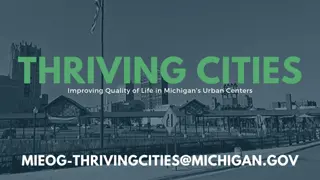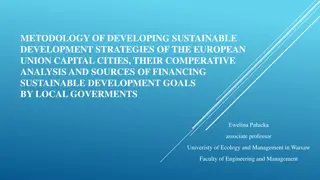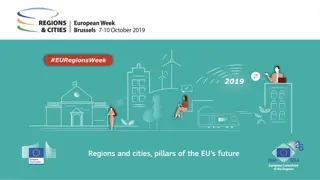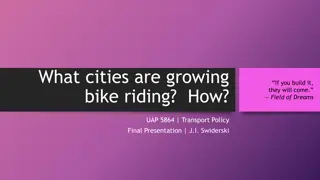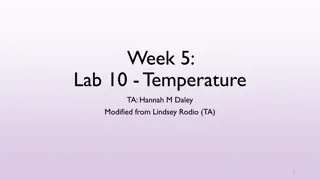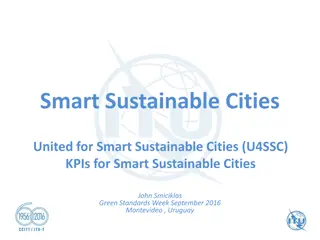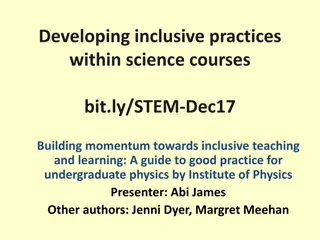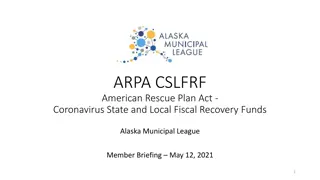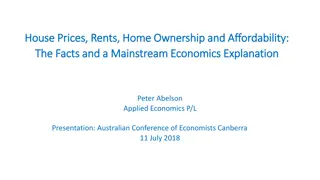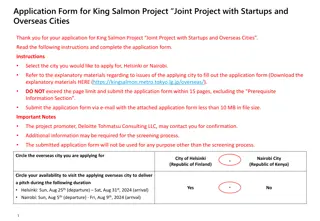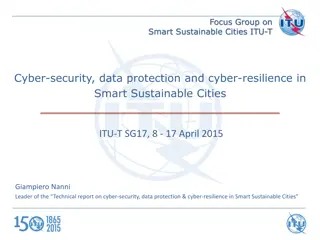Sustainable Policy Guidelines for Inclusive Cities Training Module
This training module focuses on familiarizing participants with the SDG-CRPD resource package to ensure accessible cities and communities for people with disabilities. It covers understanding the current disability situation, identifying policy steps, and accessing relevant information for implementing inclusive cities. The agenda includes interactive sessions and discussions on ableism, along with valuable insights on disability perceptions over time.
Download Presentation

Please find below an Image/Link to download the presentation.
The content on the website is provided AS IS for your information and personal use only. It may not be sold, licensed, or shared on other websites without obtaining consent from the author. Download presentation by click this link. If you encounter any issues during the download, it is possible that the publisher has removed the file from their server.
E N D
Presentation Transcript
Policy Guideline on Sustainable Policy Guideline on Sustainable Cities and Communities Cities and Communities - - SDG 11 SDG 11 In-Person Training Module Presenter's name Event or meeting title Location, (Date)
Welcome! You each have one minute to come to the front of the room, introduce yourself and share what s something you really like about the place where you live?
Objectives of the module Become familiar with the SDG-CRPD resource package and its components. Gain an understanding of the current situation in terms of people with disabilities in cities and communities Identify concrete steps that policymakers can take to guarantee accessible cities and communities in the process of implementing SDG 11 with a disability rights lens. Learn how to obtain additional information for implementation of inclusive cities in their context.
Whats in the CRPD-SDG resource package? Policy Guidelines Human Rights Indicators for the CRPD Data Sources Guidance Training Materials Videos
Agenda Start time: 00:00 Disability & Ableism (if applicable) Data contest! Drawing Our Cities Meal time: 00:00 Video Showing Implementation Challenge Next Steps Closing time:
What did you think about disability when you were 8-12 years old?
In trios: Share what you remembered What do you notice in common between the stories? Come up with a list of words that you associated with disability during that time of your life.
Ableism a value system that considers certain typical characteristics of body and mind as essential for living a life of value. Based on strict standards of appearance, functioning and behaviour, ableist ways of thinking consider the disability experience as a misfortune that leads to suffering and disadvantage and invariably devalues human life . Special Rapporteur on the rights of persons with disabilities, Report on the impact of ableism in medical and scientific practice, A/HRC/43/41, 2019
WELCOME TO THE DATA CONTEST! The team with most points will win a prize!
Question 1: By 2050 what is the percentage of people with disabilities who will be living in urban areas? (5 points) By 2050, what is the percentage of people with disabilities who will be living in urban areas? (5 points) A. 25% B. 15% C. 2%
Question 1: By 2050 what is the percentage of people with disabilities who will be living in urban areas? (5 points) B. 15% Of the 6.25 billion people predicted to be living in urban areas by 2050, an estimated 15% or 937 million, will be persons with disabilities. Cities and human settlements can impede or enable inclusion of persons with disabilities, depending on how they are planned and built, including housing and public buildings and spaces, transportation, urban services, information and communications. Lack of accessibility contributes greatly to the marginalisation of persons with disabilities, and results in disproportionate rates of poverty and exclusion. Women and girls with disabilities often experience a lack of participation in urban planning processes and additional barriers in accessing the urban environment and services, such as safety concerns in the use of public spaces or transport.
Question 2: What is the percentage of persons with disabilities, of 8 developing countries, that state transportation services are not accessible? (5 points) A. 36% B. 65% C.19%
Question 2: What is the percentage of persons with disabilities, of 8 developing countries, that state transportation services are not accessible? (5 points) A. 36% Data from 8 developing countries show that 36% of persons with disabilities consider transportation services not accessible or hindering. Major obstacles for persons with disabilities in using public transportation were steps to get in or out of vehicles, barriers in getting to stops or stations, lack of seating or difficulty seating or difficulty standing, pain or discomfort when sitting, fear or anxiety, inaccessible doors to get in and out of vehicles and inadequate access to toilets. Whenever accessibility is considered in transportation, the focus has often been on wheelchair-users only. However, other persons with disabilities also require accessibility features, e.g. audio or visual signaling. In addition, public policies tend to focus on mass transportation to which many persons with disabilities cannot access, even when accessibility requirements are met. Multi-modal transportation that might be available and individual assistive products and technologies are usually disregarded.
Question 3: Based on data from 8 developing countries, what is the percentage of persons with disabilities who report that recreational facilities are not accessible to them? (5 points) A. 56% B. 17% C. 40%
Question 3: Based on data from 8 developing countries, what is the percentage of persons with disabilities who report that recreational facilities are not accessible to them? (5 points) C. 40%
Question 4: What are the three criteria for improving accessibility of existing buildings? (5 points) A. Usability, ramps, Braille signs B. Preservation, usability, public/private nature C. Visitability, adaptability and feasibility
Question 4: What are the three criteria for improving accessibility of existing buildings? (5 points) Visitability : Visitability refers to a building that meets three requirements. These are: at least one entrance with no steps into the main floor, wide enough doors and hallways that allow for wheelchair users to access common areas, and one wheelchair accessible bathroom on the main floor. Visitability enables all people to visit the house or building but does not require the entire building to be accessible. Adaptability : While not all private and public housing units are initially constructed to accommodate persons with disabilities, the design of the housing should allow for adaptations later on if needed. For example, a bathroom may originally include a bathtub. The adaptability of the bathroom design would allow for the bathtub to be removed at low cost and provide space to add in a roll-in shower . Feasibility standards in buildings allow for exceptional accessibility measures to be implemented where technical restrictions preclude general accessibility standards. Feasibility standards should be applied on an exceptional basis and constructors should be held to strict scrutiny. For example, presenting documentation that proves that no safe technical solutions can be implemented because of characteristics of the building. In those cases, urban planning law enforcement agencies can authorize the use of alternative standards such as assisted ramps (those that require support from a third person to use them safely), removable ramps (ramps that can be removed to avoid blocking circulation), and stair lifts (electronic device that allow for wheelchairs to climb stairs), among others.
Question 5: Challenge! (10 points) Two members of your team share policies or practices in their countries that are aimed at guaranteeing inclusive and sustainable cities and communities for persons with disabilities.
In pairs, discuss: Something you learned or that surprised you in this activity.
Activity: What is the ideal city? In your groups please use the materials to create the ideal city for accessibility. Consider infrastructure, transportation, housing, services and so on.
Gallery Round: What is the ideal city? 15 minutes to review what other groups created: What do you notice?
Our cities as they are today In your groups please create a map of your current city as it is today. Again, consider infrastructure, transportation, housing, services and so on.
LUNCH BREAK! Come back at :00
Short Video As you watch and listen, pay attention to the different students highlighted and the issues shared and proposed.
Implementation Challenge: A Day In The Life Following the expanded character stories take your character through the map you created of your current city. Discuss: What are the needs of your character? In what ways is your city accessible or inaccessible for them? Based on what you ve learned so far, what would be needed in terms of urban planning and accessibility for them to improve their current situation?
In small groups: Divide your flipcharts in three sections: Housing, transportation, public spaces. Discuss: Based on what you learned in the previous activity, what actions under each category can ensure that a city or community is inclusive of persons with disabilities? Make a list under each category.
In small groups: Pick one action under each category and discuss: Who has the power to do it in your country or region? What are the first three things that would be needed for this action to be implemented? What role could you have in the process of making these actions real?
Implementation Challenge: A Day In The Life Gallery Round Individually move around the room and explore what actions other groups have written. Are there similarities or differences?
Next Steps (Add any information for follow-up after the training here)
Closing Circle Name one commitment you re making to make your cities and communities more inclusive? Who in your specific context can hold you accountable for it?
Thank you! For further information, please visit: www.ohchr.org


